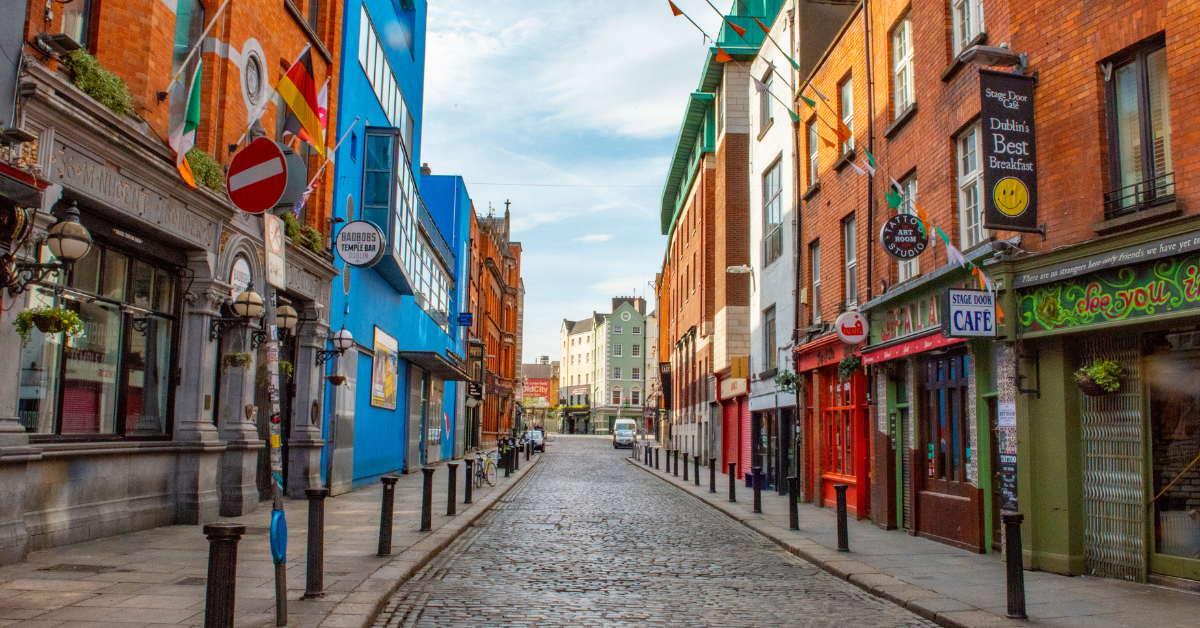Dublin, the capital of Ireland, is usually written in katakana as ダブリン in Japanese, with no widely accepted kanji form. While some creative ateji (phonetic kanji representations) exist, they have never gained popularity. For Japanese people, Dublin is not just a city name—it represents literature, music, nature, and even sports culture, shaping a unique image of the Irish capital.
Why Dublin Has No Kanji Representation
Dublin has no standardized kanji representation, and the katakana “ダブリン” is the only accepted form. Unlike cities in China or Korea, Dublin has no historical link to the kanji cultural sphere. In Japanese, foreign city names are written in katakana to prioritize sound over meaning, minimizing misunderstandings.
Attempts to create ateji (phonetic kanji representations), such as “打武林” or “大布林,” have appeared on occasion. However, these have never become widespread, lacking both historical roots and practical usage. In modern times, with the international trend toward standardized naming, katakana remains the most reliable choice.
Possible Ateji Representations for Dublin
| Candidate Representation | Reading | Features |
|---|---|---|
| 打武林 | Daburin | Uses the character “武” for strength, but lacks practicality |
| 大布林 | Daburin | Uses “大” and “布” for sound, but with weak semantic ties |
| 多武林 | Daburin | Prioritizes phonetics over meaning, more of a creative form |
Thus, while ateji may exist, they are not in common use.
Images Japanese People Have of Dublin
Dublin as a City of Literature
Dublin is renowned for producing world-famous literary figures such as James Joyce and W.B. Yeats. For Japanese literature enthusiasts, Dublin is strongly perceived as an “intellectual city,” with literary walking tours and memorial sites drawing attention even among tourists.
Harmony of Nature and Architecture
Ireland is known as the “Emerald Isle,” and Dublin reflects this image with its lush greenery and stone-built cityscape. Visitors often describe Dublin as a calm and historic European city, a landscape that resonates with Japanese travelers who admire its balance of nature and tradition.
Music and Pub Culture
Dublin is the heart of Irish music and pub culture. With countless pubs offering Guinness beer and live performances of traditional Irish music, Japanese travelers see Dublin as “a city where you enjoy music and drink.” The combination of entertainment and culture is one of Dublin’s strongest impressions in Japan.
Dublin as a Sports City
Beyond culture, Dublin also stands out as a city of sports. Rugby, Gaelic football, and soccer are all immensely popular, with the iconic Aviva Stadium serving as the stage for international tournaments.
| Sport | Features | Recognition in Japan |
|---|---|---|
| Rugby | Hosts international matches and World Cup games | High (boosted by Japan’s rugby success) |
| Gaelic Football | Unique Irish sport, considered a national game | Low (but niche fanbase exists) |
| Soccer | Club and national matches, UEFA qualifiers | Moderate (influenced by European soccer) |
Sporting events energize the entire city, contributing to its image as a “city of passion” among Japanese people.
Dublin as a Tourist Destination
| Tourist Attraction | Features |
|---|---|
| Trinity College Library | Houses the Book of Kells, a symbol of literature and history |
| Guinness Storehouse | Brewery experience for the world’s most famous beer |
| Aviva Stadium | Internationally known sports and concert venue |
| Temple Bar District | Cultural nightlife hub filled with music and pubs |
Dublin offers a unique blend of culture, nature, and sports, making it a versatile destination for Japanese tourists.
Summary of Japanese Perceptions of Dublin
| Element | Content |
|---|---|
| Writing Form | No kanji form exists; katakana “ダブリン” is the only standardized form |
| Literature | Birthplace of literary giants like Joyce and Yeats, seen as a “city of literature” |
| Nature & City | Harmonious blend of parks and stone buildings, seen as a “green and calm city” |
| Music & Culture | Irish music, pub life, and Guinness as cultural symbols |
| Sports | Rugby, soccer, Gaelic football define Dublin as a “sports city” |
| Tourism | Viewed as a historic European city with diverse attractions |
Conclusion
Dublin has no established kanji representation; katakana “ダブリン” is the only recognized form. This reflects both the lack of historical ties with the kanji cultural sphere and the global trend toward standardized naming.
At the same time, the Japanese perception of Dublin is multifaceted. It is seen as a city of literature, a green and historic urban landscape, a hub of music and pub culture, and an international sports stage. These layers combine to create a rich and appealing image.
Even without kanji, Dublin carries cultural, historical, and emotional significance through its katakana form, ensuring it remains a city of enduring fascination for Japanese people.






